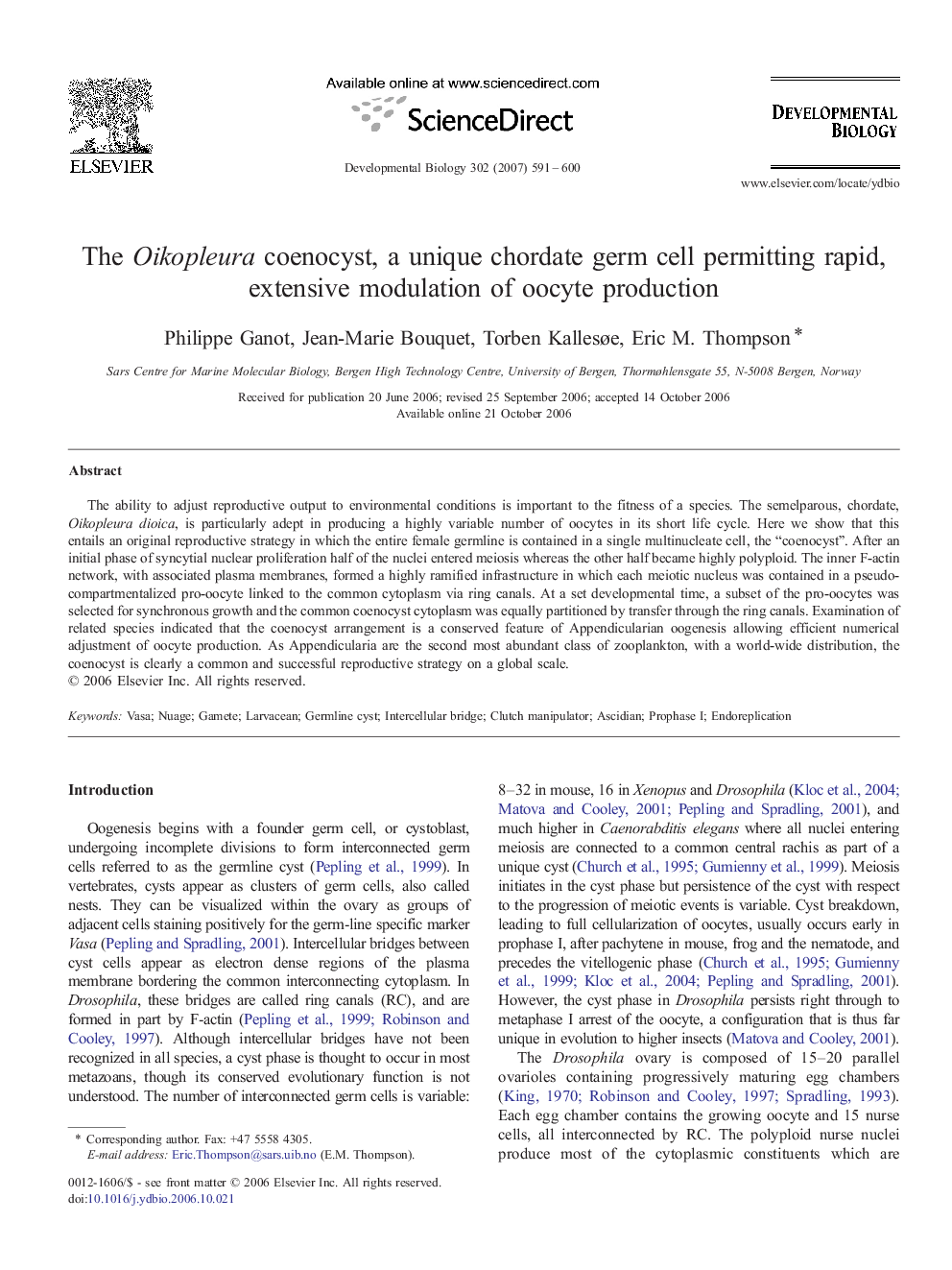| Article ID | Journal | Published Year | Pages | File Type |
|---|---|---|---|---|
| 2175276 | Developmental Biology | 2007 | 10 Pages |
The ability to adjust reproductive output to environmental conditions is important to the fitness of a species. The semelparous, chordate, Oikopleura dioica, is particularly adept in producing a highly variable number of oocytes in its short life cycle. Here we show that this entails an original reproductive strategy in which the entire female germline is contained in a single multinucleate cell, the “coenocyst”. After an initial phase of syncytial nuclear proliferation half of the nuclei entered meiosis whereas the other half became highly polyploid. The inner F-actin network, with associated plasma membranes, formed a highly ramified infrastructure in which each meiotic nucleus was contained in a pseudo-compartmentalized pro-oocyte linked to the common cytoplasm via ring canals. At a set developmental time, a subset of the pro-oocytes was selected for synchronous growth and the common coenocyst cytoplasm was equally partitioned by transfer through the ring canals. Examination of related species indicated that the coenocyst arrangement is a conserved feature of Appendicularian oogenesis allowing efficient numerical adjustment of oocyte production. As Appendicularia are the second most abundant class of zooplankton, with a world-wide distribution, the coenocyst is clearly a common and successful reproductive strategy on a global scale.
